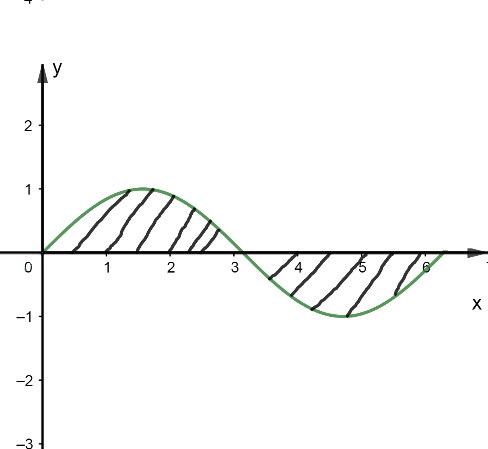Question
Question: The maximum value of \(4{{\sin }^{2}}x-12\sin x+7\) is. A. 25 B. 4 C. Does not exist D. None...
The maximum value of 4sin2x−12sinx+7 is.
A. 25
B. 4
C. Does not exist
D. None of these
Solution
Hint: We know that the value of sinθ varies from – 1 to 1. So, from this concept we will try to find the maximum value of the given equation.
Complete step-by-step Solution:
It is given in the question that we have to find the maximum value of,
⇒4sin2x−12sinx+7
Taking 4 common from 4sin2x−12sinx, we get,
⇒4(sin2x−3sinx)+7
Now, we will add and subtract (23)2 and also multiply and divide the term 3sinx by 2. So, we will get,
⇒4[sin2x−2.sinx.23+(23)2−(23)2]+7
Since we know that (a+b)2=a2+2ab+b2 , we write the above equation as,
⇒4[(sinx−23)2−49]+7
On opening the bracket and multiplying the terms inside the bracket with 4, we get,
⇒4(sinx−23)2−49×4+7⇒4(sinx−23)2−9+7⇒4(sinx−23)2−2
We know that, the value of sin varies from – 1 to 1
⇒−1≤sinx≤1..........(1)

(Graph of sinx)
Subtracting 23 from all sides in equation (1), we get,
⇒−1−23≤(sinx−23)≤+1−23or⇒2−5≤(sinx−23)≤2−1
On squaring all sides fraction sign changes, we get,
⇒41≤(sinx−23)2≤425
On multiplying the above expression by 4, we get,
⇒1≤4(sinx−23)2≤25
Subtracting 2 from all sides, we get,
⇒1−2≤4(sinx−23)2−2≤25−2⇒−1≤4(sinx−23)2−2≤23
Hence, the maximum value of [4(sinx−23)2−2] is 23.
Or the maximum value of 4sin2x−12sinx+7 is 23.
Therefore option (D) is the correct answer.
Note: This question can be solved in just a few steps. You just need to memorise the graph of sin x and keeping limits of sin in mind to solve this problem. This will save your time.
One mistake that can be committed is by not changing the inequality sign and getting the wrong result.
